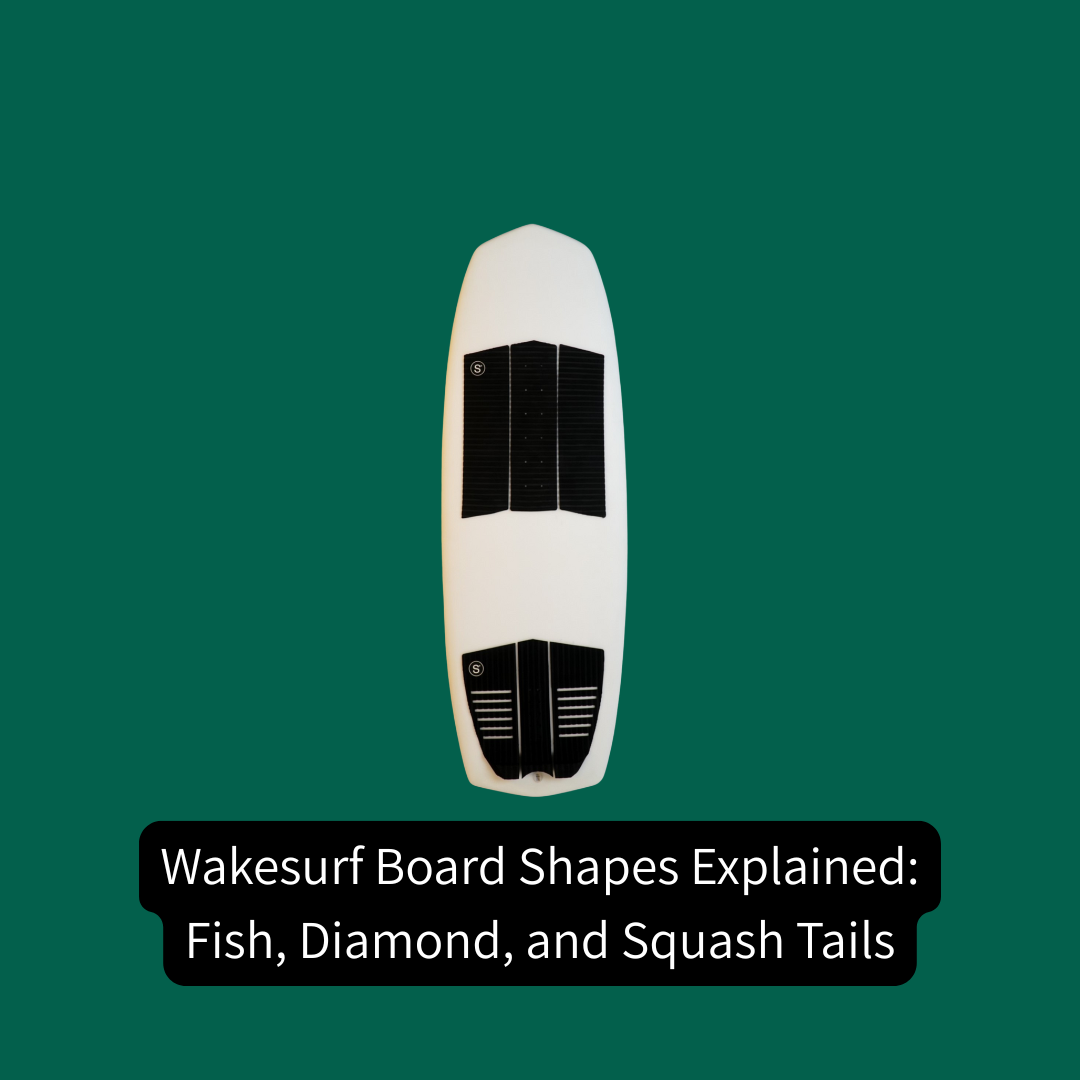
Wakesurf Board Shapes Explained: Fish, Diamond, and Squash Tails
Share
When it comes to wakesurf boards, every detail matters. From rocker lines to rail profiles, small design changes have a big impact on performance. But one of the most important and often on of the most overlooked features is the tail shape.
The tail doesn’t just finish the outline of the board; it controls how water flows off the back, directly affecting the performance of the board. In this post, we’ll break down three of the most common tail designs in wakesurfing: fish, diamond, and squash and we’ll explain how each one rides and who it’s best for.
The Fish Tail
At first glance, the fish tail is instantly recognizable by its wide outline and deep V cut through the middle. It almost looks like the board has been split in two at the tail, creating two “points” on either side.
How it rides:
- The extra surface area gives the board speed and lift, helping it carry through weaker or smaller waves. The extra speed and lift also tends to help larger riders stay in the sweet spot.
- The split tail acts like twin fins, providing natural drive and control.
-
Smooth rail-to-rail transitions make carving feel fluid and fun.
Who it’s for: Fish tails are perfect for riders who want a playful, fast board that keeps its flow in small to medium waves. If carving, cruising, and stylish turns are your priority, the fish delivers.
The Diamond Tail
The diamond tail takes the squared-off shape of a squash and sharpens the corners into angled points, resembling a cut gemstone.
How it rides:
- Those sharper corners release water more quickly, allowing for faster, snappier turns compared to a squash.
- The width at the tail still provides stability and drive when needed.
-
It’s a blend of control and looseness, steady when you want it, but capable of quick pivots at the lip.
Who it’s for: The diamond is a versatile choice for intermediate to advanced riders looking to balance speed with agility. It’s especially popular for riders who like to mix carving with tricks and spins. Because the diamond has more surface area on the back it, provides extra push for those larger riders who have a harder time staying in the sweet spot.
The Squash Tail
The squash is the classic surfboard tail, rounded square with a flat end. It’s been around for decades in ocean surfing, and for good reason, it just works.
How it rides:
- Balanced performance between drive and maneuverability.
- The wider outline creates a stable platform for landings and recoveries.
-
Predictable response in a variety of conditions makes it a go-to for progression.
Who it’s for: The squash tail is the ultimate all-around option. Whether you’re a beginner learning to stay in the wave or an advanced rider looking for consistency across tricks, the squash is dependable and versatile
Side-by-Side Comparison
|
Tail Shape |
Speed |
Stability |
Agility/Turns |
Best Wave Size |
Rider Level |
|
Fish |
High |
Medium |
Smooth Carves |
Small–Medium |
Beginner–Advanced |
|
Diamond |
Medium–High |
Medium |
Quick, Snappy |
Medium |
Intermediate–Advanced |
|
Squash |
Medium |
High |
Balanced |
Small–Large |
All Levels |
Choosing the right tail shape is about more than looks, it’s about matching your board to your riding style and goals. Fish tails bring playful speed, diamond tails offer versatility with snap, and squash tails deliver all-around dependability.
At Smith Board Co, we design with these details in mind, building boards that let you unlock the performance you’re looking for. If you’re curious which shape is right for you, check out our board lineup and find the perfect fit for your ride.
